Riddles and Tricky Questions for Kids with Answers: Sharpening Young Minds with Fun and Laughter
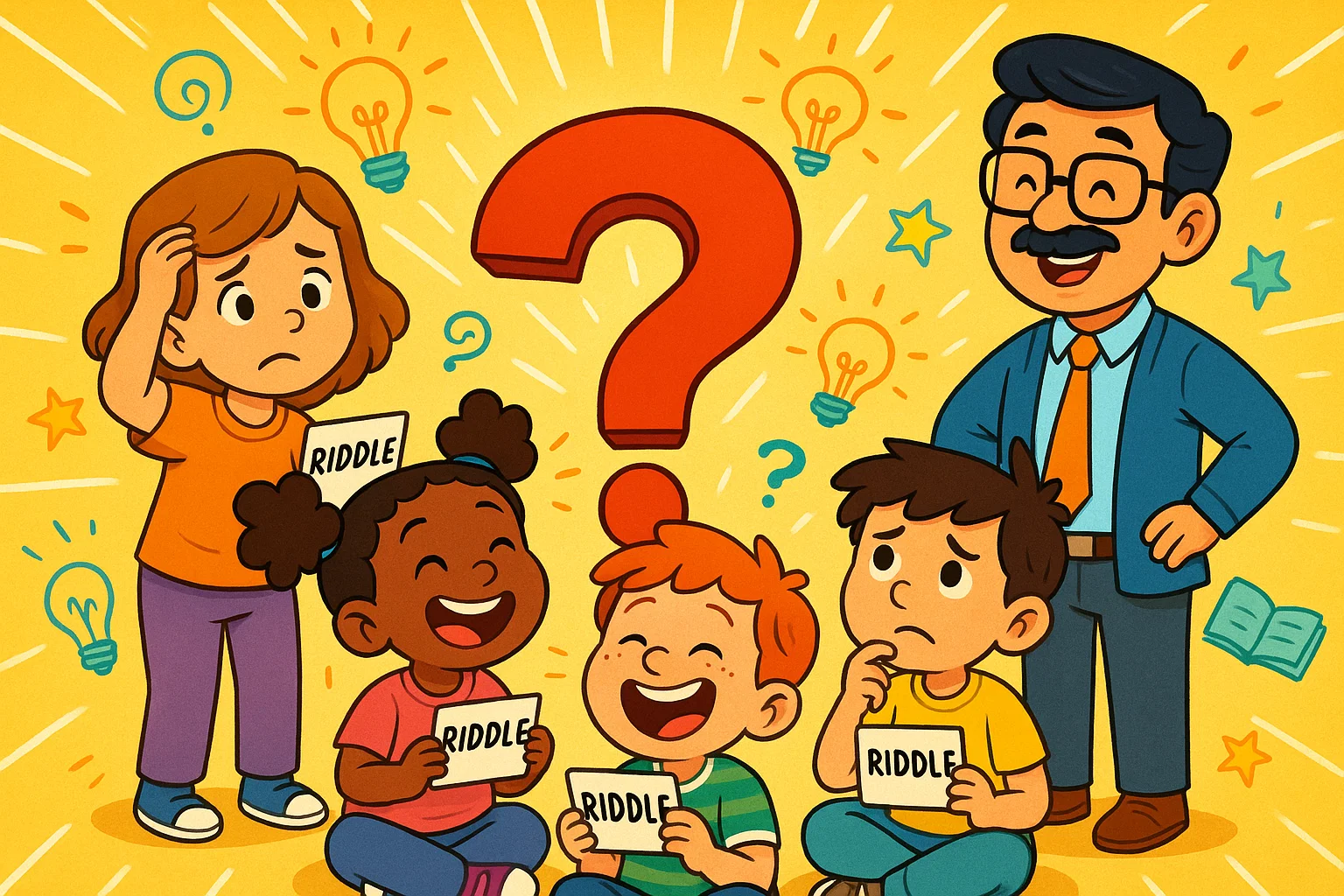
Tricky questions and riddles are more than fun trivia; they’re clever puzzles that spark laughter while building problem-solving, logic, and creativity. This guide brings together the best questions with answers, from easy, giggle-worthy riddles for younger kids to challenging brain teasers for older ones, perfect for car rides, lessons, or family time. Dive in and enjoy puzzles that will have children and even adults thinking hard and laughing loud!
Easy Tricky Questions for Kids
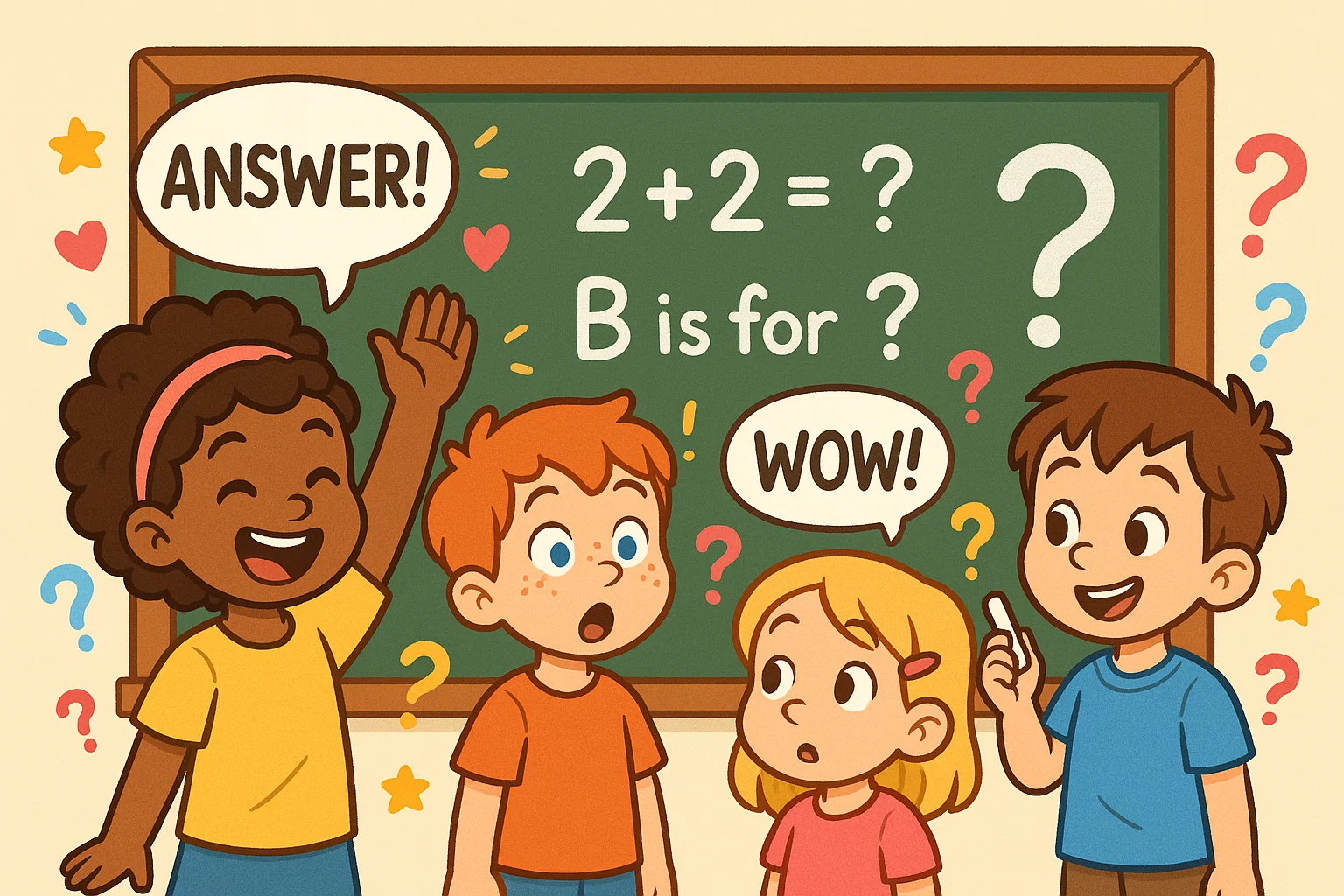
Starting with the basics is key, especially for younger kids (ages 5–7). These easy trick questions are designed to introduce the concept of a “trick” gently. They focus on simple wordplay, common knowledge, and immediate, funny solutions. The goal here is pure enjoyment and building confidence in their ability to answer unusual prompts. When a child successfully solves these, it reinforces the idea that questions are a fantastic way to exercise their brain playfully.
Short and Simple Tricky Questions
These are the quick-hit brain teasers that are perfect for when you only have a few seconds—like waiting in line or sitting at a traffic light. They require minimal focus but deliver maximum fun. Many of these rely on listening carefully to the phrasing.
| Prompt | Answer |
| What has to be broken before you can use it? | An egg. |
| What is full of holes but still holds water? | A sponge. |
| I am tall when I am young and short when I am old. What am I? | A candle. |
| What has a head and a tail but no body? | A coin. |
Example: “What question can you never answer yes to?” (Answer: “Are you asleep yet?”) This kind of inquiry immediately encourages kids to think about the words rather than just the topic.
Everyday Objects in Tricky Questions
Using familiar items helps make the puzzle immediately relatable and less abstract. Questions with answers related to everyday objects children see and interact with, like shoes, clocks, and books, provide a tangible anchor for their thought process. This connection to the real world is an important step in developing logical thinking.
- I have cities, but no houses; forests, but no trees; and water, but no fish. What am I? (Answer: A map)
- What has one face and two hands, but no arms or legs? (Answer: A clock)
- You are holding me, but I am not in your hands. What am I? (Answer: Your attention)
These riddles are a great way to link playful language to concrete objects, teaching them that words can be misleading and that deeper meaning requires attention.
Easy Riddles with Answers
Easy riddles often rhyme or follow a simple pattern, which helps young solvers. They are typically descriptive and focus on a single, clear object. The satisfaction of figuring out these beginner-friendly tricky riddles is a powerful motivator.
- I have keys, but open no locks. I have a space, but no room. You can enter, but can’t go outside. What am I? (Answer: A keyboard)
- What begins with a ‘T’, ends with a ‘T’, and has ‘T’ in it? (Answer: A teapot)
- What runs around the whole yard without moving? (Answer: A fence)
Funny Tricky Questions for Kids
Humor is a powerful cognitive aid. When children are laughing, their brains are more receptive to new information and connections. Funny tricky questions for kids leverage this, turning the challenge into a joyous experience. Laughter makes the prompt more memorable and reduces the pressure of finding the “correct” solution, thus encouraging risk-taking in their thinking. This is where you can truly make learning fun.
Jokes Turned into Tricky Questions
Some of the most engaging funny riddles feel like the setup for a punchline but require a clever answer instead. These puzzles play with the child’s expectation of a joke structure, surprising them with a logical or literal answer.
- Why did the student eat his homework? (Answer: Because the teacher told him it was a piece of cake.)
- What is always in front of you but can’t be seen? (Answer: The future)
- If you have a bowl with six apples and you take away four, how many do you have? (Answer: The four you took.)
Silly and Confusing Questions
These are the delightfully absurd confusing questions that tickle a child’s imagination. They often involve impossible scenarios or literal interpretations of common phrases, creating a challenge that has a simple, funny twist.
Prompt: A bus driver goes the wrong way down a one-way street. He passes the police car and is not stopped. Why?
Answer: The bus driver was walking. (This plays on the literal meaning of “bus driver” versus the action described).
Prompt: What has four wheels, can move quickly, but only has one seat?
Answer: A taxi cab. (This is a fun one to watch kids try to figure out!)
Family-Friendly Funny Questions
These tricky questions with answers are perfect for shared moments—like dinner or a long car ride. They are simple enough for the whole family to participate in, fostering family bonding while engaging in creative thinking. The lighthearted competition to solve them first makes these moments special.
- What is a pirate’s favorite letter? (Answer: The C, or alternatively, the RRR!)
- What has many teeth but cannot bite? (Answer: A comb)
- How can you drop a raw egg onto a concrete floor without cracking it? (Answer: Concrete floors are very hard to crack!)
Hard Tricky Questions for Kids
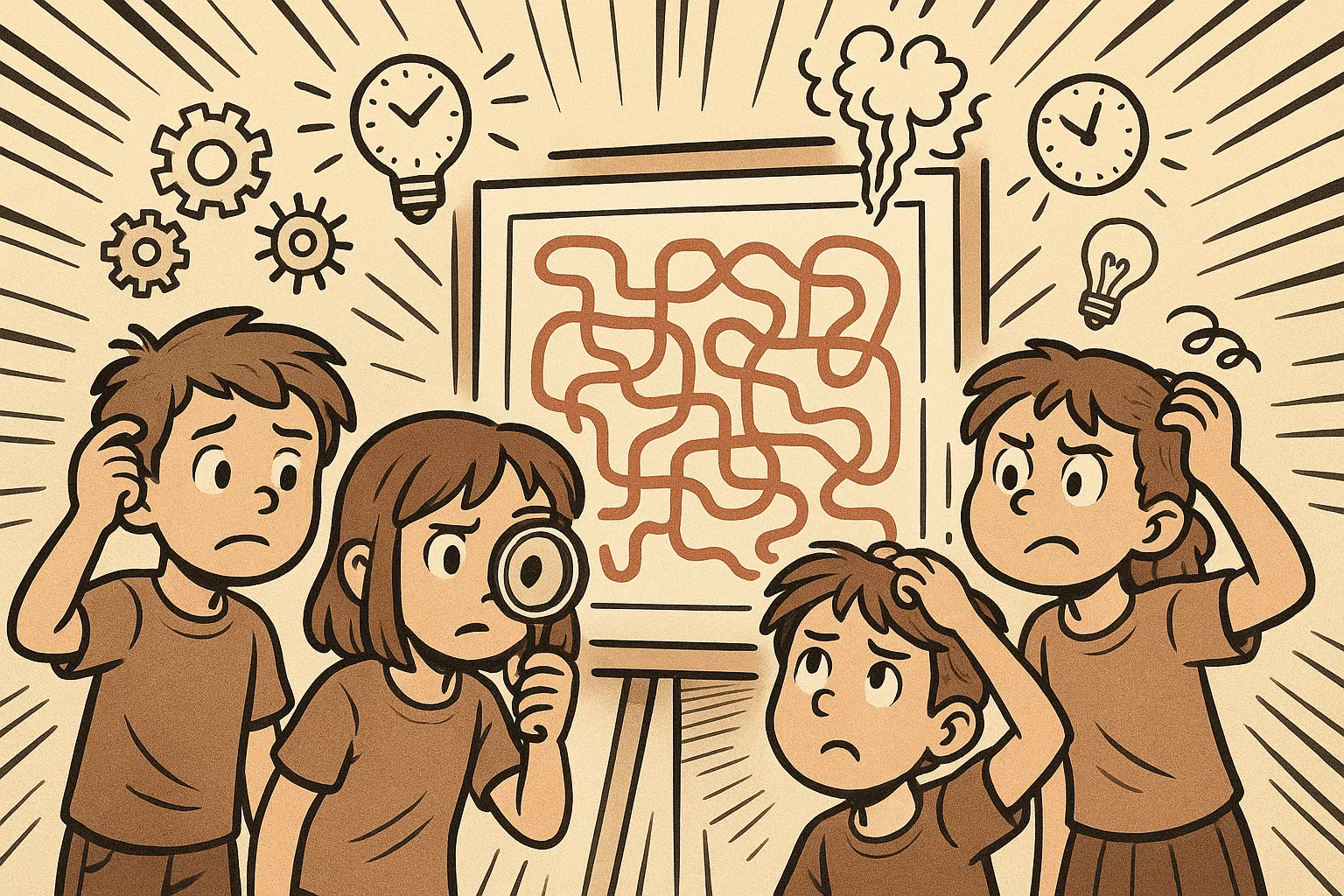
As children grow and their cognitive skills develop, they need more challenging material. Hard trick questions are ideal for older kids (ages 8–12) who are ready to move beyond simple wordplay into structured reasoning and abstract logic. These puzzles significantly improve problem-solving skills and teach resilience in the face of intellectual difficulty. The most effective questions that challenge an older child are those that require multiple steps of thought.
Logic-Based Tricky Questions
These puzzles demand methodical, step-by-step reasoning, often involving simple math or spatial relationships. They train the child to eliminate impossible solutions and focus on the structural logic of the puzzle. These are excellent for introducing foundational principles of abstract problem-solving.
Prompt: I am an odd number. Take away a letter and I become even. What number am I?
Answer: Seven (Take away the ‘s’ and it becomes ‘even’).
Prompt: If you are in a race and you pass the person in second place, what place are you in?
Answer: Second place.
The Case of the Missing Sock: Research published in the Journal of Experimental Child Psychology suggests that engaging with riddles supports children’s cognitive development and helps them build reasoning and problem-solving skills.
Brain Teasers with Surprising Answers
These are designed to make the solver immediately jump to the most common, obvious conclusion, only to have the literal and unexpected answer revealed. The “trick” here is the child’s own assumption. They teach the valuable lesson of questioning assumptions, a core component of critical thinking.
- A man sails a boat with no wind, no sails, and no engine. How is this possible? (Answer: The man is using a rowboat.)
- What two things can you never eat for breakfast? (Answer: Lunch and dinner.)
- A plane crashes on the border of the U.S. and Canada. Where are the survivors buried? (Answer: Survivors aren’t buried.)
Puzzle-Style Tricky Questions
These multi-step problems are the hardest and best suited for children who truly love a complex intellectual challenge. They often involve narrative or multiple conditions that must all be satisfied.
Prompt: The day before yesterday I was 7, and next year I will be 10. How is this possible?
Answer: Today is January 1st. The day before yesterday (December 30th) the person was 7. Yesterday (December 31st) they turned 8. This year (today, Jan 1st) they will turn 9. Next year they will turn 10.
Math Tricky Questions for Kids
For many children, math can feel intimidating. However, math riddles turn that experience on its head, making mathematical concepts playful and accessible. These challenges encourage kids to think about numbers, not just as tools for calculation, but as abstract elements in a fun puzzle, thus strengthening their problem-solving skills.
Number-Based Tricky Questions
These focus on the properties of numbers, basic operations, and sequence recognition. They are often deceptively simple, using minimal numbers but requiring maximum thought.
| Prompt | Answer |
| How many times does the digit 9 appear between 1 and 100? | 20 times (9, 19, 29, 39, 49, 59, 69, 79, 89, 90, 91, 92, 93, 94, 95, 96, 97, 98, 99) |
| If you multiply this number by any other number, the answer will always be the same. What number is it? | Zero (0) |
| A snail is climbing up a 10-foot pole. It climbs up 3 feet every day and slips down 2 feet every night. How many days does it take the snail to reach the top? | Eight days (On the 8th day, it climbs the final 3 feet to reach the top without slipping back down.) |
Geometry-Inspired Tricky Questions
These puzzles relate to shapes, space, and measurement but are framed as riddles. They require visualizing and manipulating objects mentally, a crucial step in developing spatial reasoning.
- What has an edge but no corners, and a center but no beginning or end? (Answer: A circle)
- Draw a line. Without touching it, how can you make it longer? (Answer: Draw a shorter line next to it, and the first line will look longer.)
Everyday Math Questions
By grounding the math puzzle in common real-life scenarios—money, time, distances—you make the abstract concrete. This demonstrates the practical relevance of mathematical problem-solving.
Prompt: Mary has two U.S. coins that total 30 cents. One of them is not a nickel. What are the two coins?
Answer: A quarter (25 cents) and a nickel (5 cents). (The trick is that one is not a nickel, but the other one is!)
Animal Tricky Questions for Kids
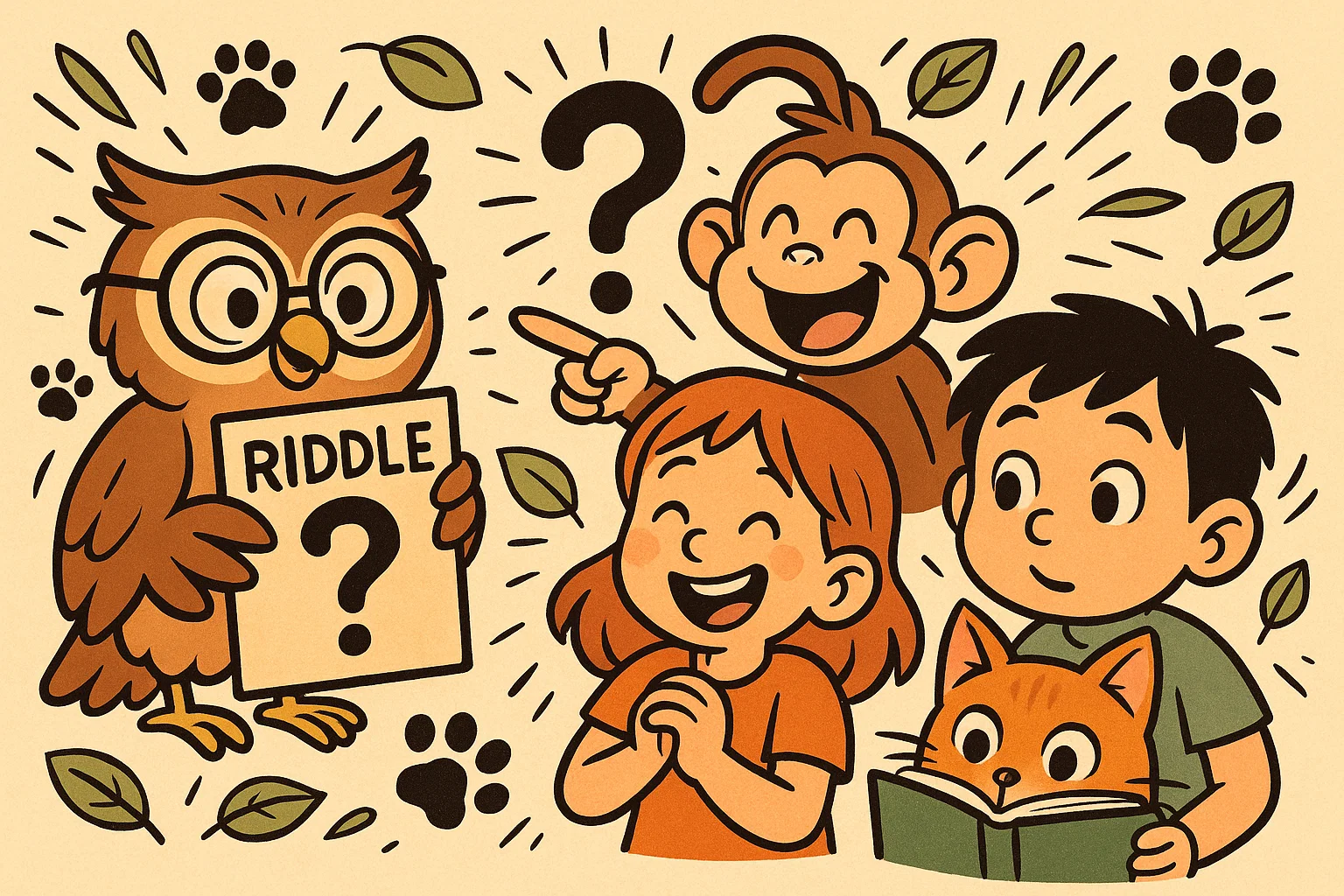
Children have a natural affinity for the animal kingdom, making animal-themed prompts for kids instantly engaging. These funny tricky questions use common knowledge about animals but twist the phrasing to require a clever, often literal, answer.
Farm Animal Tricky Questions
These are often simple and perfect for younger kids, using animals they are familiar with from books and visits to the farm.
- What do you call a sleeping bull? (Answer: A bulldozer)
- Why do cows wear bells? (Answer: Because their horns don’t work!)
Wild Animal Tricky Questions
Introducing wild animals can add an element of exotic fun to the challenge, sparking curiosity about nature.
Prompt: What animal is always the last to leave a jungle?
Answer: The elephant (because it has its trunk).
Funny Animal Answers
These brain teasers are designed purely for the giggles, often with answers that involve puns or silly logic.
- What has an ear but cannot hear? (Answer: An ear of corn)
- What is a dog’s favorite food after it rains? (Answer: A puddle of mud!)
Science Tricky Questions for Kids
Blending playful tricky riddles with basic science concepts is an excellent way to nurture a child’s natural curiosity about the world. These prompts make fundamental concepts—from physics to biology—feel accessible and fun. They are a brilliant way to challenge kids intellectually.
Nature-Based Tricky Questions
These challenges revolve around the environment, weather, and natural phenomena.
| Prompt | Answer |
| What travels around the world but stays in a corner? | A stamp. |
| What is always coming, but never arrives? | Tomorrow. |
| What can be measured but has no length, depth, or width? | Temperature. |
Human Body Tricky Questions
Simple biology puzzles are a fun way for kids to learn about their own bodies and what makes them work.
- What part of the body holds an entire vocabulary? (Answer: The tongue)
- What has teeth, but cannot eat? (Answer: A comb or a zipper)
Space Tricky Questions
The universe is full of wonder, and space-themed riddles can inspire awe and promote interest in astronomy.
Prompt: I am a dark, black mass, yet I have light within. I am everywhere and nowhere. What am I?
Answer: Space.
Holiday and Seasonal Tricky Questions for Kids
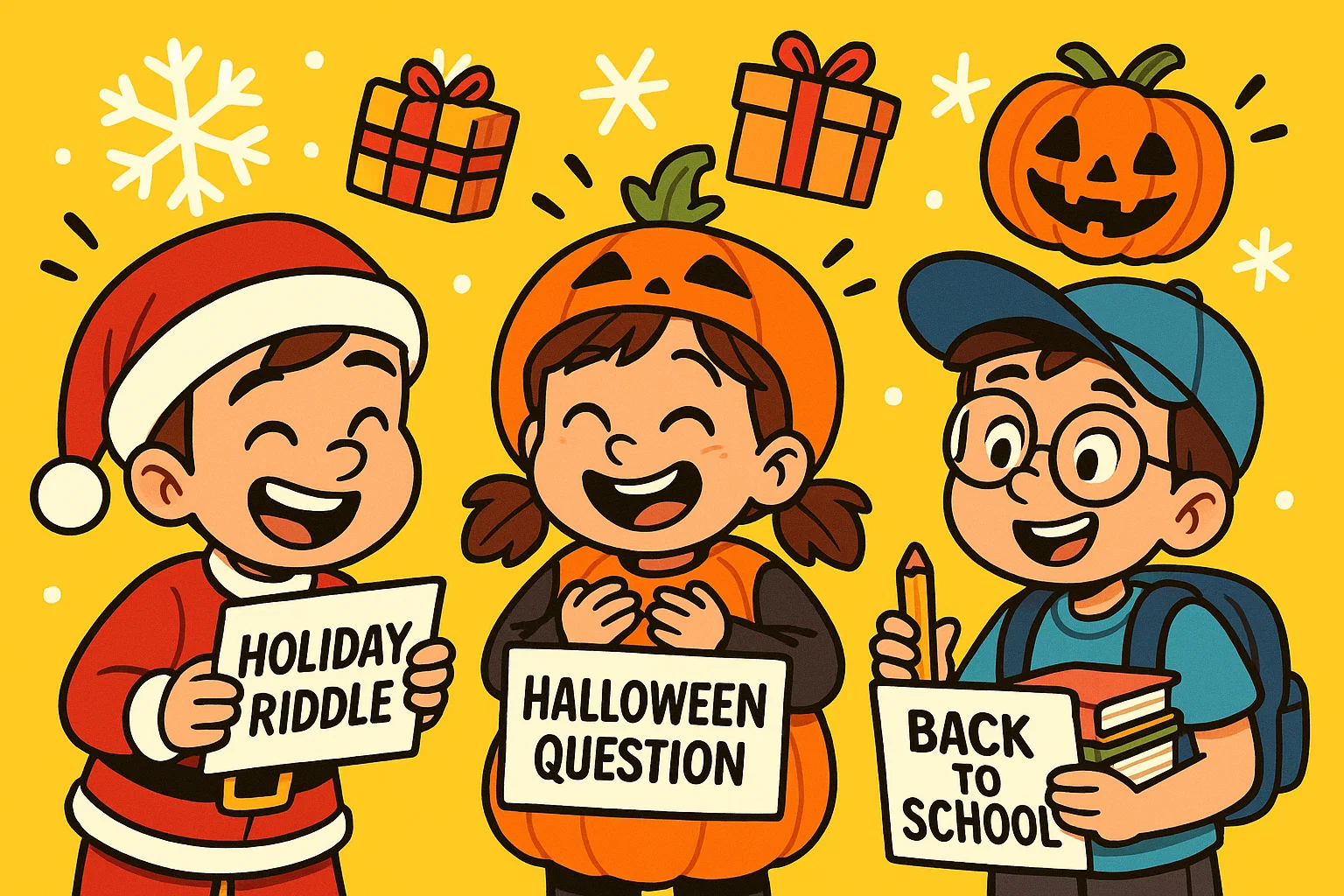
Themed prompts are a fantastic way to tie cognitive challenges to special times of the year, adding a layer of festive relevance that kids will love. These are excellent for family gatherings and celebrations.
Christmas Tricky Questions
Perfect for keeping kids entertained during the holidays!
- What do you call a reindeer with bad manners? (Answer: Rude-olph)
- What do you get if you cross a snowman and a vampire? (Answer: Frostbite)
Halloween Tricky Questions
Spooky, silly trick questions for children for the month of October.
- Where do vampires keep their money? (Answer: In a blood bank)
- What do you call a witch’s garage? (Answer: A broom closet)
School Season Tricky Questions
Prompts about school, books, and teachers can be used to lighten the mood around the start or end of the school year.
- What is a teacher’s favorite kind of sandwich? (Answer: An alphabet soup sandwich)
- What is the longest word in the dictionary? (Answer: ‘Smiles’ – because there is a mile between the two S’s!)
Benefits of Tricky Questions for Kids
The value of engaging with tricky riddles and questions and answers goes far beyond mere entertainment. They are a potent, enjoyable form of mental exercise that directly contributes to essential developmental milestones. When children are asked these questions, they are given tools for lifelong learning.
Improve Critical Thinking
The primary benefit of solving a trick question is the enhancement of critical thinking. A brain teaser is designed to mislead, forcing the child to pause and analyze the language and assumptions. This process trains their brain to:
- Analyze the Premise: They must deconstruct the wording, looking for wordplay or misdirection.
- Evaluate Assumptions: They learn not to jump to the first, most obvious conclusion.
- Formulate Logical Alternatives: They practice forming new hypotheses and testing them against the clues.
Developmental psychologists note that the ability to ‘de-center’ from an initial, misleading interpretation is a cornerstone of advanced logical thought. This is the core of problem-solving skills.
Boost Creativity
Solving confusing questions and hard riddles requires more than just logic; it demands creative thinking. The child must look at the problem from entirely new angles—to “think outside the box.”
- They learn to appreciate non-literal language.
- They see that sometimes the solution is found in the prompt’s structure, not its content.
- They develop fluency in generating diverse solutions.
This kind of playful mental flexibility is a hallmark of creative thinking and contributes to adaptability and innovation later in life.
Build Family Bonding
Engaging in a shared activity that is both fun and challenging, like solving best tricky puzzles, naturally strengthens the bond between parents and children and adults alike. Asking these questions creates an environment where:
- Communication is Open: The back-and-forth process of guessing and analyzing is a form of healthy conversation.
- Empathy is Practiced: Children learn patience and to appreciate different ways of thinking when a sibling or parent solves the puzzle in a way they didn’t see.
- Shared Joy is Created: Laughter and mutual success are powerful memory-makers.
Tips for Making Tricky Questions for Kids
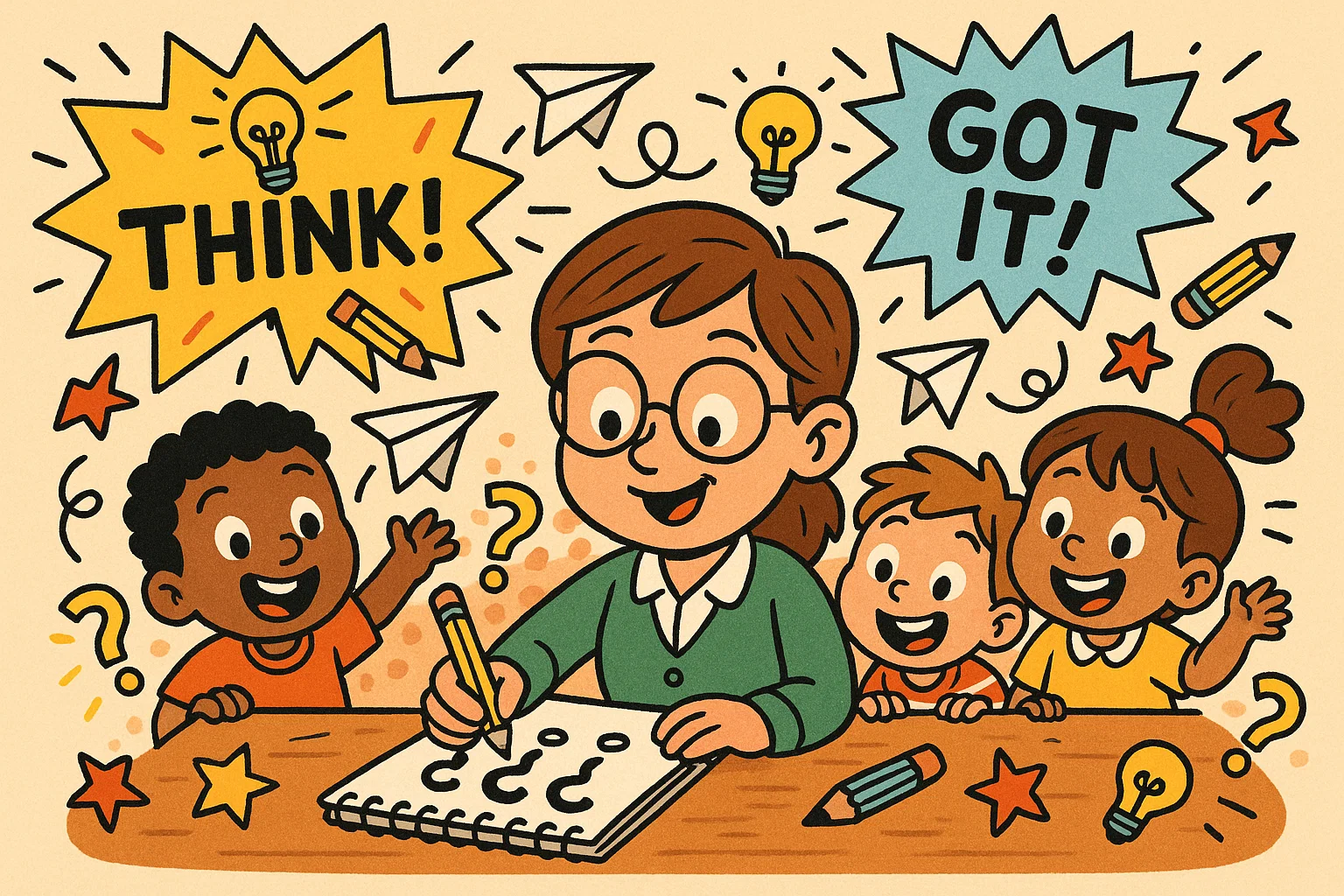
Once this list of questions with answers has been used, children can try creating their own tricky questions and start creating effective trick questions yourselves! This is an even higher level of cognitive engagement, moving from consumption to creation.
Start with the Answer
The easiest way to create a good trick prompt is to pick a common object, word, or concept with multiple meanings, and then design the prompt to lead the solver to the wrong meaning.
- Choose a word: E.g., “Orange” (It’s a color and a fruit).
- Create a misleading clue: E.g., “I am bright, but I am not the sun.”
- Create the trick: E.g., “What is a color you can eat, but a fruit you can’t taste?” (The answer is just the word “Orange,” which is a color, and the riddle plays on the different meanings.)
Use Humor and Imagination
The best tricky prompts are memorable because they are funny. Tips for creating effective trick challenges include:
- Incorporate Puns: Wordplay is the heart of most good riddles.
- Use Absurd Scenarios: Prompts involving impossible actions (like a bus driving the wrong way) are inherently funny.
- Keep it Playful: The tone should be light; the goal is fun, not frustration.
Age-Appropriate Wording
The complexity of the language should match the child’s developmental stage.
| Age Group | Focus on: | Example Wording: |
| Ages 5–7 | Literal meaning, simple objects, and short sentences. | “What has four legs in the morning, two legs at noon, and three legs in the evening?” (Man – crawling, walking, cane) |
| Ages 8–12 | Abstract concepts, layered logic, and complex sentence structure. | “What has cities, but no houses; forests, but no trees; and water, but no fish?” (A map) |
Frequently Asked Questions (FAQs)
What is a tricky question for kids?
A tricky question for kids is a puzzle or a riddle deliberately phrased to lead the solver to an incorrect or obvious answer. The real answer is usually clever, unexpected, or requires a literal interpretation of the words used. They are designed to engage creative thinking and test a child’s problem-solving skills. For example: “If you threw a red rock into the blue sea, what would it become?” (Answer: Wet).
What age is best for tricky questions?
While the best age for complex, hard trick questions is typically 8–12 (older kids), simpler easy trick questions and easy riddles can be introduced as early as age 4 or 5 (younger kids). The key is to match the challenge’s complexity—both in language and logic—to the child’s cognitive stage. Starting easy helps build confidence before moving to best tricky challenges.
How many tricky questions should kids practice daily?
There is no fixed number, but the goal is quality over quantity. Instead of a high-volume drill, aim for 3–5 engaging challenges to ask during a shared, relaxed time—like during dinner, a car ride, or before bed. The focus should be on discussing why the answer is tricky and celebrating the effort, not just getting the answer right. This makes the activity feel like fun trivia rather than homework.
Are tricky questions better than riddles?
Tricky questions and riddles are very similar and often overlap. Generally, a riddle is a descriptive statement that requires the solver to guess the described object, while a trick question is a query that uses linguistic misdirection to fool the solver. Both are wonderful tools for cognitive development. The best tricky riddles for kids combine the descriptive element of a riddle with the unexpected twist of a trick question, providing a truly comprehensive mental workout. Using a mix of both ensures maximum engagement and variety in boosting problem-solving skills.
